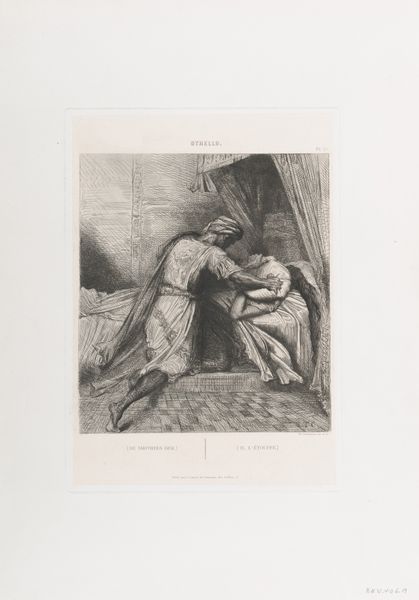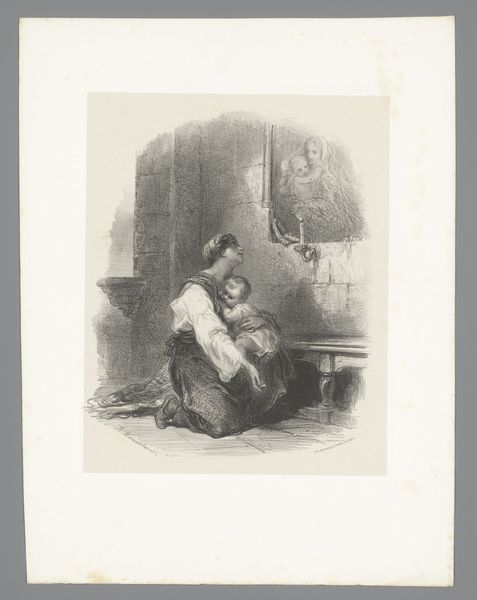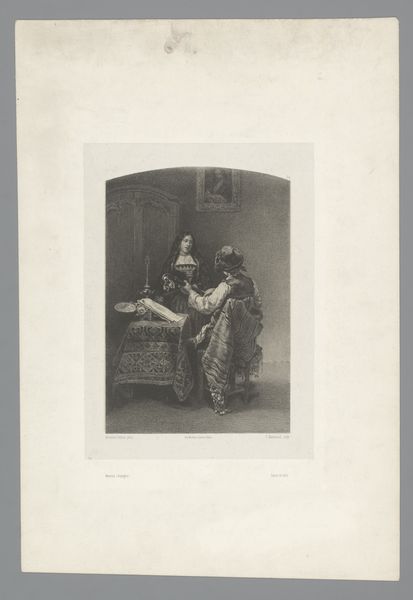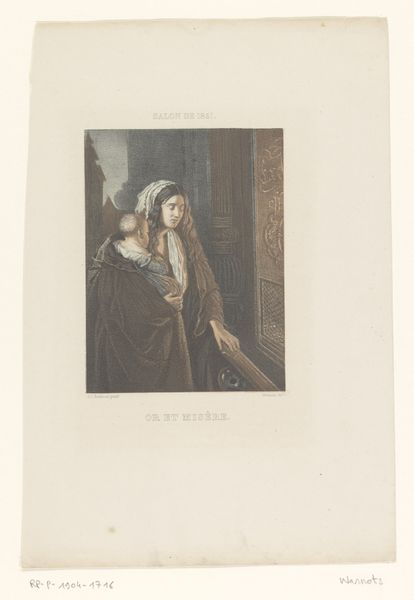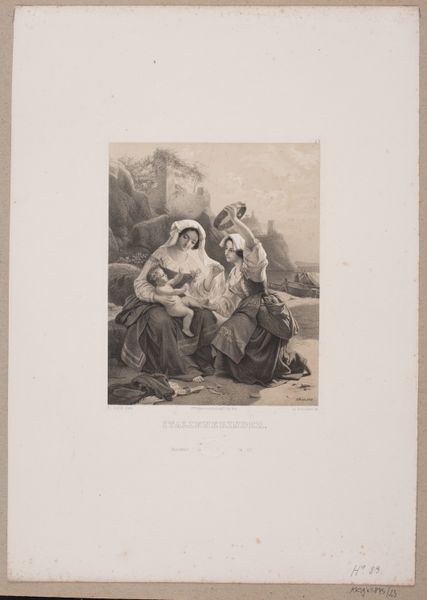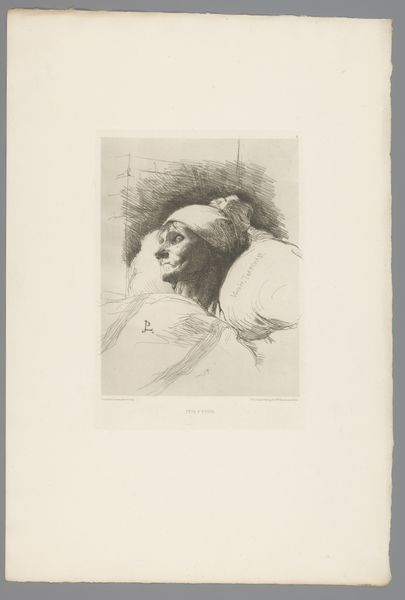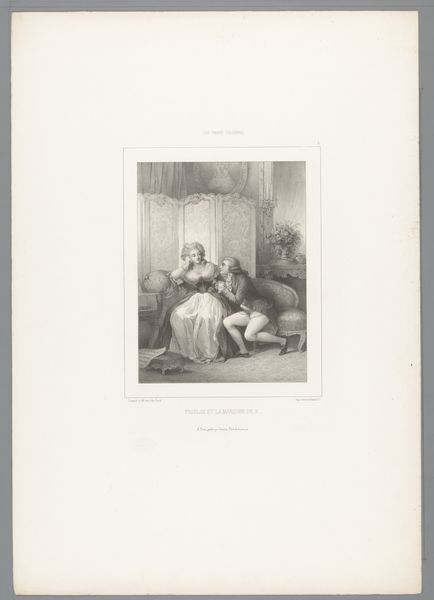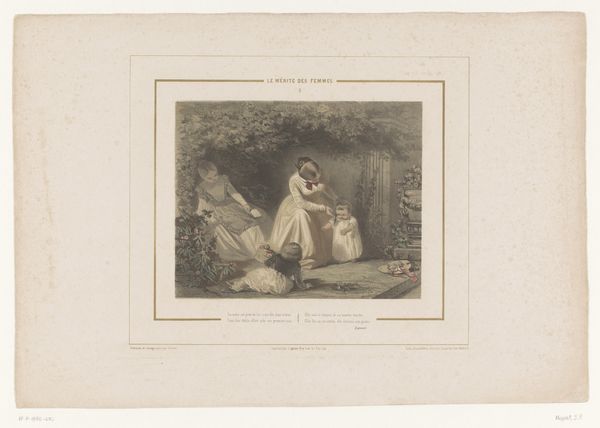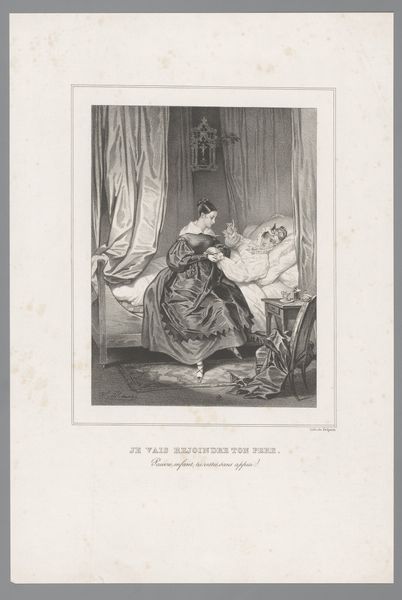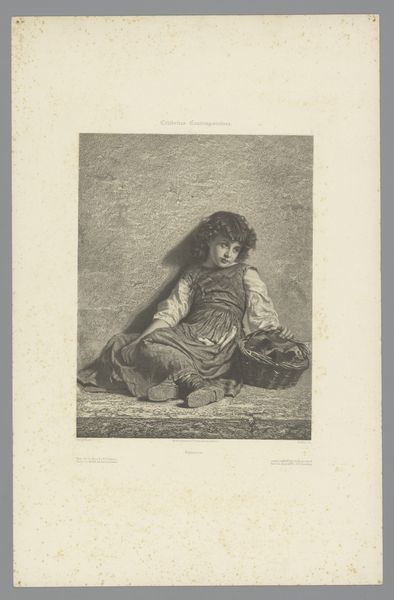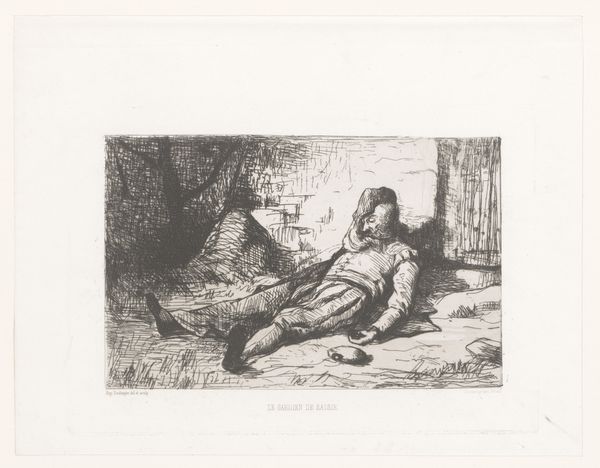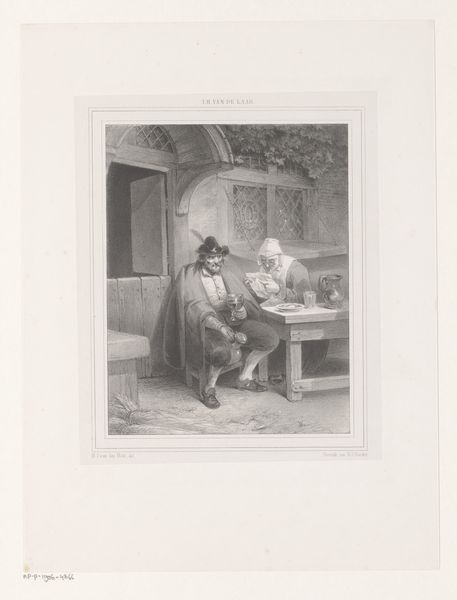
print, etching
#
portrait
#
aged paper
#
narrative-art
# print
#
etching
#
genre-painting
#
realism
#
monochrome
Dimensions: height 361 mm, width 275 mm
Copyright: Rijks Museum: Open Domain
Editor: Here we have Eugène Louis Pirodon's "Vrouw troost baby in haar armen," or "Woman Comforting Baby in Her Arms," from 1863, created as an etching. There's a somber tone to it; the way the woman holds the baby seems both protective and weary. What underlying stories do you see embedded within this image? Curator: This piece resonates with the political climate of 1863, specifically in France, steeped in social upheaval and revolution. How might we interpret this mother and child as representing a broader struggle for survival and resilience against societal forces, framed within the intersection of motherhood and class? Editor: I hadn’t thought about it in terms of class struggle. So the woman’s posture, her simple clothes… they all contribute to that reading? Curator: Exactly. Consider the Realist movement, which Pirodon was associated with; it sought to depict everyday life, particularly the lives of the working class, without romanticization. Where do you think this image sits within the discourse around representations of women in that era, navigating both domesticity and public struggle? Is it a portrait of universal motherly love, or a call to social action? Editor: It’s definitely both, now that you point it out. I see how her intimate act of caring for the child is made even more poignant set against what may be poverty and uncertainty. I appreciate knowing how Realism impacted the art of the time! Curator: And this brings a heightened consciousness about art and how it connects with contemporary political struggles. Now, reflecting on our discussion, do you see ways to connect this 19th-century image with contemporary feminist and class-conscious narratives? Editor: Yes, definitely. Thanks to you, I can now see the mother and child through a different, much wider lens.
Comments
No comments
Be the first to comment and join the conversation on the ultimate creative platform.
